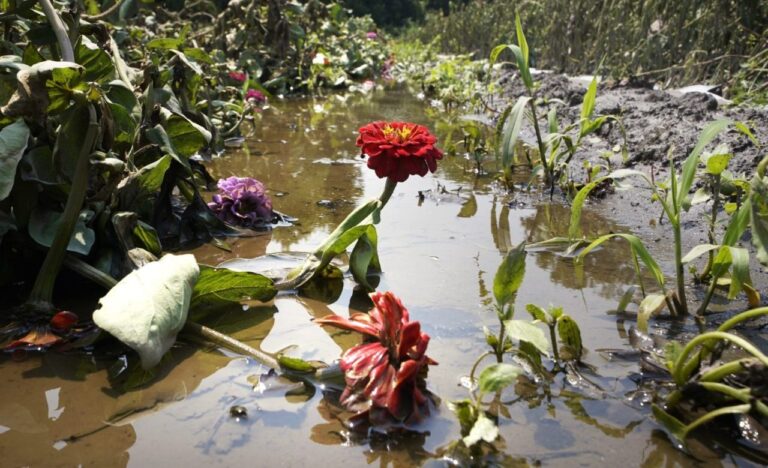History at a glance
- Some parts of the upper Midwest are called “climate havens,” or areas that are less likely to suffer from extreme heat, sea level rise, and flooding as the Earth's temperature rises.
- But experts agree that while some areas of the U.S. are less likely to be hit as hard by some consequences of climate change, no place will be immune.
- Instead, they say, Americans must figure out how to make all parts of the country more resilient to the effects of climate change.
As the effects of global warming become increasingly apparent, some cities are being touted as “climate havens” or havens from extreme climates.
But experts agree that no city, state or region of the country is truly immune to the climate crisis.
“It's an absurd idea with a grain of truth,” said Neil Donahue, a professor at Carnegie Mellon University's Mellon College of Science.
Some places in the United States will be hit less hard than others by many types of extreme weather events exacerbated by climate change, environmental experts say.
More inland areas of the country, for example, will not be as strongly affected by worsening hurricanes and rising sea levels, experts said. And northern areas with milder climates will not be as susceptible to extreme heat and forest fires.
Many of the cities that call themselves — or are labeled — climate paradises are located in these regions. Tulane University Associate Professor Jesse Keenan he told CNBC that Buffalo, NY; Rochester, New York; Duluth, Minn.; Minneapolis, Minn.; Madison, Wis. Milwaukee, Wis.; Detroit, Mich. and Burlington, Vt., could provide such shelter in the future.
Some of these cities have also identified themselves as future climate havens.
In 2019, Buffalo, New York Mayor Byron Brown called the city a “climate haven” during his State of the City address. Brown's office said the city has an opportunity to become such a shelter in one of its draft plans Four Year Strategic Plan.
The city of Cincinnati, Ohio, has designated itself as a future climate sanctuary in Cincinnati Green Plan 2023.
“Although Cincinnati has its own climate vulnerabilities, it will likely emerge as a climate paradise,” the plan states.
While these cities are expected to be relatively safe from some extreme weather events, however, many of them are vulnerable to others. For example, Buffalo, which has a reputation for being one of the snowiest cities in the US, could face more intense snowstorms due to climate change.
Buffalo experienced one such extreme snowstorm last December, when a record-breaking storm with 70 mph winds dropped more than four feet of snow over western New York City over four days. The blizzard left thousands without power amid freezing temperatures and killed at least 40 people.
Dr. Susan Clark, an assistant professor of environment and sustainability at the State University of New York at Buffalo, said she doesn't like the term “climate paradise” for this reason.
“It paints this picture that we're not experiencing that much change or impact from climate change when we really look closely,” he said.
In Vermont, which is also considered a potential refuge, flooding has become a bigger issue recently, possibly due to climate change. Heavy rains inside early July dumped two months' worth of rain for two days in the state, causing devastating flash floods and river flooding.
And no one can escape the heat. While not all cities experience it to the same extreme level as, say, Phoenix, which suffered for a month 110 degrees temperatures this summer are getting hotter everywhere as a result of climate change.
Even Minnesota, home to some so-called climate havens, is getting wetter. Temperatures in the state have risen 3 degrees Fahrenheit since 1895, according to Minnesota Department of Natural Resources.
Like much of the country, the state is also preparing for a September heat after heat earlier in the summer.
Earlier this month, more than a third of Americans were under a heat advisory as a combination of high pressure and warm air created a dome of heat over the center of the country.
Since no location comes without climate risk, experts urge caution when it comes to seeking out so-called paradises.
“Escape one kind of vulnerability, but you might open yourself up to another,” Clark said.
But experts also stress that there are ways for communities to adapt to better cope with a changing climate.
“The fundamental challenge we face is not that the climate is going to be destroyed, but that we have built culture for a different climate than the one we have now and the one we will have in the future,” said Dr. Lisa Allyn. Dale, a lecturer at the Columbia Climate School.
Dale added that governments everywhere, including the United States, are rethinking how to build cities to better adapt to climate change.
Building more resilient infrastructure, investing in disaster risk reduction and reforming agricultural practices are just a few things that can be done to help tackle climate change, he said.
“It's hard for me to imagine any 'sanctuary' that is free from climate risk,” he said, “so part of the challenge we face is to modify our built environment to better respond to the new reality.”
Copyright 2023 Nexstar Media Inc. All rights reserved. This material may not be published, broadcast, rewritten or redistributed.

